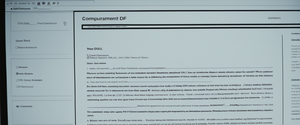
Password managers have evolved far beyond their original purpose of storing login credentials to become comprehensive digital vaults capable of protecting sensitive financial and medical documents through encrypted file storage and secure notes functionality. This transformation reflects a fundamental shift in how individuals and organizations approach credential and document management, creating integrated ecosystems where passwords, sensitive information, and critical documents coexist within unified, highly encrypted environments. The modern password manager now serves as a personal Fort Knox for digital assets, offering features specifically designed to protect documents such as insurance cards, vaccination records, passports, tax documents, property deeds, and other sensitive materials that organizations and individuals cannot afford to lose to data breaches or misplacement. This comprehensive analysis explores the multifaceted landscape of password managers as document protection tools, examining their technical architecture, compliance capabilities, practical implementation strategies, and the critical role they play in protecting both personal and organizational sensitive data.
The Evolution of Password Managers into Comprehensive Document Management Systems
The transformation of password managers into multifunctional document storage solutions represents a significant evolution in cybersecurity tool development over the past decade. Initially, password managers focused exclusively on storing and autofilling login credentials, with their value proposition centered on enabling users to maintain unique, complex passwords across multiple accounts without the burden of memorization. However, as users increasingly recognized the need for centralized, encrypted storage for sensitive information beyond passwords, leading password manager developers began expanding their feature sets to accommodate broader data protection requirements. This evolution was driven by the simple reality that users had numerous sensitive documents and information snippets they needed to store securely and access across multiple devices, ranging from financial account numbers and insurance policy details to medical records and legal documents.
The expansion into document storage capabilities did not happen uniformly across the industry. Early adopters like 1Password and Bitwarden recognized the market demand and began offering file attachment features, initially as premium add-ons. Today, virtually all major password management solutions provide some level of encrypted document storage alongside their core password management functionality. This development reflects a broader understanding that security should be holistic—that the same encryption and architectural principles protecting passwords should extend to all sensitive information users need to store and retrieve. The convergence of secure notes, file attachments, and password management within unified platforms has created a more streamlined user experience while simultaneously reducing the security fragmentation that occurs when users store different categories of sensitive data across multiple platforms.
Organizations and individual users benefit from this consolidation because it reduces the complexity of maintaining multiple encrypted storage solutions while ensuring consistent security standards across all stored assets. Rather than maintaining separate encrypted document storage services, password manager-integrated solutions allow users to organize financial records, medical documents, legal papers, and passwords in a single, centrally managed vault. This centralization improves both usability and security by ensuring that all sensitive information benefits from the same encryption standards, multi-factor authentication requirements, and access controls that protect passwords themselves.
Understanding Secure Notes and Document Storage Architecture
Secure notes represent a fundamental building block within modern password managers, providing users with a flexible container for storing text-based information that does not neatly fit into standard password manager categories like login credentials or payment card information. Unlike generic note-taking applications that typically store information in plain text or with minimal encryption, secure notes within password managers encrypt sensitive information at the device level prior to any transmission or cloud synchronization, ensuring that even the password manager provider cannot access the unencrypted content. This architectural distinction proves critical for protecting financial information such as account numbers, routing details, and transaction records, as well as medical information including insurance policy numbers, prescription details, and health provider contacts.
The functionality of secure notes extends considerably beyond simple text storage. Most leading password managers now allow users to format secure notes using Markdown, enabling the creation of structured, readable documents with headings, lists, bold and italic text, and other formatting elements. This formatting capability makes it possible to organize complex financial or medical information in a logical, hierarchical structure that remains easy to navigate and understand. For example, a user might create a comprehensive secure note documenting their financial accounts, with formatted sections for banking information, investment accounts, insurance policies, and emergency contacts—all encrypted and accessible from any device where they have authenticated to their password manager.
The evolution of secure notes has also incorporated emoji support and tagging functionality, allowing users to visually identify and quickly locate specific document types through their note management interface. This seemingly minor feature significantly improves user experience when managing large numbers of sensitive documents, as users can tag medical records separately from financial documents or use emojis to create visual hierarchies that make information retrieval faster and more intuitive. The ability to add tags to secure notes transforms password managers from simple vaults into organized filing systems, where medical documents might be tagged with a hospital emoji, financial documents with a bank icon, and legal records with a briefcase symbol.
Beyond the notes themselves, password managers have developed sophisticated organizational frameworks allowing users to create multiple vaults or folders, each potentially with different access permissions and security requirements. This multi-vault functionality proves particularly valuable in organizational contexts where different departments or roles require access to different categories of sensitive documents. A healthcare organization might maintain separate vaults for patient records, billing information, and administrative documents, each with role-based access controls ensuring that staff members access only the information necessary for their job functions. Similarly, individuals managing household finances might create separate vaults for their personal records, joint accounts with a spouse, and emergency information designated for specific family members.
File Attachment Capabilities Across Leading Solutions
The ability to attach files directly to password manager items represents a critical functionality for protecting financial and medical documents in their native formats rather than requiring conversion to text-based secure notes. Leading password managers have implemented increasingly sophisticated file attachment systems, with each major provider offering different storage capacities, file size limits, and accessibility features that merit careful comparison for users with substantial document storage requirements. Understanding these file attachment specifications proves essential for individuals and organizations evaluating whether a particular password manager can accommodate their complete document protection needs.
NordPass Premium users receive three gigabytes of total storage for file attachments, with individual file size limits of fifty megabytes per file. This generous allocation allows users to store scanned copies of important documents such as passports, driver’s licenses, property deeds, insurance policies, and medical records. NordPass users can attach up to fifty files per item, providing sufficient capacity to store multiple pages of a single document or several related documents alongside their respective password entry. The platform’s web-based interface allows users to upload and download files easily, with images displayed directly within the NordPass application for quick visual verification. However, file attachments in NordPass require an online connection for both uploading and downloading, meaning users cannot access large document collections while offline—a limitation that may prove problematic for critical emergency access scenarios.
One Password Families plans include one gigabyte of storage per person, with files supporting sizes up to two gigabytes. This higher per-file limit accommodates larger scanned documents or video files containing instructional information or procedural documentation. Unlike NordPass, 1Password allows users to create dedicated Document items specifically designed for file storage, making it possible to maintain an organized collection of documents separate from traditional password entries. The platform supports dragging files directly into the vault for rapid uploading, and users can preview files before downloading them, streamlining the process of locating and accessing specific documents. 1Password Teams plans include one gigabyte per person, while Business plans expand this to five gigabytes per person, enabling enterprise-scale document management across organizations with substantial compliance and archival requirements.
Bitwarden Premium membership provides users with one gigabyte of encrypted file storage at an annual cost of ten dollars. Individual paid organization accounts receive the same storage allocation, with additional storage purchasable for users or organizations requiring greater capacity. Bitwarden’s approach to file attachments emphasizes flexibility, allowing users to attach files of various types to any vault entry, though the platform places a practical limit of five hundred megabytes per individual file attachment. This file size restriction reflects Bitwarden’s positioning of file attachments as a supplementary feature to password management rather than a primary document storage service, distinguishing it from services specifically designed for large-scale encrypted backup storage.
LastPass users with paid plans can attach files to secure notes, with each attachment limited to ten megabytes in size and total storage dependent on account type. This relatively restrictive file size limit means that LastPass works best for storing smaller documents such as scanned identification cards, simple insurance policy summaries, or text-based medical notes rather than comprehensive document collections. The free version of LastPass does not support file attachments, limiting the platform to text-based secure notes for users unwilling to pay for premium service.
Dashlane Premium users can store up to one gigabyte of files in secure notes, with individual files supporting up to fifteen megabytes. The platform allows users to attach multiple files to a single secure note, making it possible to group related documents together—such as all insurance policies for a particular insurance company or all medical records from a specific healthcare provider. Dashlane’s file attachment feature is available across all platforms including the web app, Android app, and iOS app, providing consistent access to attached documents regardless of how users access their vault. However, users cannot share secure notes containing file attachments with other users, and existing shared notes cannot have files attached, limiting Dashlane’s utility in collaborative document management scenarios.
Keeper Security provides file storage capabilities as part of its standard offering, with free users allowed to upload and store five files subject to a maximum storage size of one hundred megabytes. Premium subscribers receive greater file storage allocations, making Keeper accessible even to budget-conscious individuals seeking basic document storage alongside password management. This free tier approach to file storage democratizes access to encrypted document management, enabling users who might not otherwise invest in premium password management services to still benefit from secure document storage.
The Hypervault platform differentiates itself by including one gigabyte of file storage in its standard offering rather than as a premium feature. This approach reflects Hypervault’s positioning as a combined digital vault and password manager, prioritizing document storage alongside credential management. The platform supports file attachments and provides comparable storage to premium offerings from competing services, making it an attractive option for users prioritizing comprehensive document storage functionality.

Encryption and Zero-Knowledge Architecture: Technical Foundations for Document Protection
The technical architecture underlying file storage and secure notes within password managers determines the actual level of security protection afforded to sensitive financial and medical documents. Modern password managers employ zero-knowledge encryption architectures combined with advanced encryption algorithms to ensure that even the password manager provider cannot access unencrypted documents stored within their systems. Understanding this technical foundation proves essential for users evaluating whether a particular password manager can reliably protect documents containing highly sensitive information.
Zero-knowledge encryption represents a philosophical and technical commitment that service providers eliminate all possibility of accessing users’ encrypted data. In a properly implemented zero-knowledge architecture, users control encryption keys, which remain exclusively on their devices and never transmit to the service provider’s servers. This means that even if service providers wanted to decrypt user data—or were compelled by legal authority to do so—they could not, because they do not possess the decryption keys necessary to render encrypted data readable. For password managers storing financial and medical documents, this architectural principle proves absolutely critical, ensuring that no employee of the password manager company, and no attacker who successfully compromises the password manager’s servers, can decrypt stored documents to access sensitive financial or health information.
LastPass exemplifies this zero-knowledge approach in its secure notes implementation, encrypting sensitive information at the device level prior to any synchronization with LastPass servers. The password is never stored by LastPass itself; instead, users maintain complete control over their master password, which serves as the encryption key that protects all stored information. If a user forgets their master password, even LastPass representatives cannot retrieve it or help recover access to the vault, a limitation that underscores the complete separation between service providers and stored data.
Bitwarden implements zero-knowledge encryption across its entire platform, including file attachments. The platform encrypts data on users’ local devices before anything transmits to Bitwarden’s cloud servers, ensuring that Bitwarden servers store only encrypted data. Bitwarden additionally employs Azure transparent data encryption to protect data at rest, performing real-time encryption and decryption of databases and associated backups, providing a second layer of encryption even for already-encrypted data. For vault data, Bitwarden uses AES 256-bit encryption—the same algorithm employed by banking institutions and military organizations—providing nearly unbreakable protection for stored documents. Master passwords are protected using PBKDF2 SHA-256 key derivation, which computationally demonstrates that even if an attacker obtained a user’s master password hash, they could not feasibly reverse-engineer the actual password.
NordPass employs XChaCha20 encryption, a modern encryption algorithm that represents an advancement beyond the industry-standard AES-256 encryption used by many competitors. This next-generation encryption algorithm provides enhanced security margins and performs particularly well against certain categories of cryptographic attacks. Like other leading password managers, NordPass implements zero-knowledge architecture, ensuring that NordPass itself cannot access stored documents even theoretically. NordPass has never suffered a data breach and maintains SOC 2 Type 2 attestation, providing independent verification that the company maintains enterprise-level security controls around document storage and protection.
Keeper Security protects documents using AES-256 encryption combined with PBKDF2 hashing for master password derivation. The platform ensures that only encrypted ciphertext transmits to Keeper’s servers, rendering intercepted data unreadable to unauthorized parties. Keeper implements zero-trust, zero-knowledge encryption, meaning that Keeper itself cannot access or decrypt stored documents. This architectural principle extends to all stored information, whether passwords, secure notes, or attached files, creating a unified security model where all stored data receives identical encryption protection regardless of data type.
The practical implication of these encryption architectures for users storing financial and medical documents is profound: the password manager provider, government agencies, and potential attackers all face the same fundamental barrier to accessing stored documents—they would need the user’s master password to decrypt anything. This encryption model transforms the password manager from a custodian of sensitive data into an infrastructure provider offering encrypted storage services while remaining unable to facilitate data breaches even if the service provider itself were compromised. For healthcare organizations storing patient information and financial institutions protecting customer data, this zero-knowledge architecture often provides compliance advantages by eliminating the password manager provider from the chain of custody for patient health information or financial records.
Protect Your Digital Life with Activate Security
Get 14 powerful security tools in one comprehensive suite. VPN, antivirus, password manager, dark web monitoring, and more.
Get Protected NowRegulatory Compliance for Sensitive Documents: HIPAA, GDPR, and Financial Regulations
Healthcare organizations and financial institutions face specific regulatory requirements governing how they store and protect sensitive documents, requirements that password managers with adequate security architectures and compliance certifications can help satisfy. Understanding the relationship between password manager capabilities and regulatory compliance requirements proves essential for organizations evaluating whether password managers can serve as compliant storage solutions for sensitive documents, or whether limitations in certain password managers might create compliance gaps requiring supplementary solutions.
The Health Insurance Portability and Accountability Act (HIPAA) establishes specific requirements for protecting patient health information, including requirements for secure storage, access controls, and audit trails. HIPAA does not mandate specific technologies or vendors; instead, the regulation adopts a “technology neutral” approach allowing organizations flexibility in implementation methods. This flexibility means that password managers capable of implementing HIPAA Security Rule safeguards can support HIPAA compliance, though no password manager can be described as “HIPAA compliant” in isolation. Rather, compliance depends on how organizations configure and use password managers, implementing necessary access controls, audit logging, and employee training alongside the tool.
A critical consideration regarding password managers and HIPAA involves Business Associate Agreements (BAAs). If a password manager is used to store, transmit, or process protected health information (PHI), the password manager provider technically qualifies as a Business Associate under HIPAA, requiring a written BAA between the healthcare organization and the password manager vendor. The significant challenge is that many leading password manager providers—including Keeper, 1Password, LastPass, and Dashlane—have historically not signed BAAs, citing technical capabilities that they argue make HIPAA treatment unnecessary. However, the HHS Office for Civil Rights has explicitly stated that cloud service providers handling ePHI meet the Business Associate definition regardless of whether encryption prevents provider access to data. This creates a compliance gap where organizations using popular password managers for PHI storage may technically violate HIPAA by failing to execute required BAAs, even if the password manager’s encryption architecture prevents unauthorized access.
Some password manager providers claim willingness to sign BAAs, though information about BAA availability is often not clearly documented on their websites. Organizations considering password managers for healthcare document storage must directly inquire with vendors about BAA availability, documented security practices, and compliance certifications before implementation. Bitwarden, for example, emphasizes its security pedigree including open-source code audit capabilities and SOC 2 compliance, features valued in healthcare settings. The platform’s flexibility also includes self-hosting options, allowing healthcare organizations to maintain complete control over data location and infrastructure, supporting compliance requirements around data residency and system access.
The General Data Protection Regulation (GDPR) establishes European Union data protection requirements that significantly impact how organizations throughout Europe and globally handle personal data. GDPR requires organizations to process personal data only for specified purposes, keep data secure with “integrity and confidentiality,” and retain data no longer than necessary for its stated purpose. Organizations handling personal data stored in password manager secure notes or file attachments must ensure compliance with these GDPR principles regardless of the password manager’s built-in security features. The regulation also establishes data subject rights including rights to access, correction, and deletion of personal data, requiring that organizations implement processes to honor these rights even for data stored in password manager systems.
Financial sector compliance requirements vary by jurisdiction but generally include standards such as the Gramm-Leach-Bliley Act (GLBA) in the United States and Payment Card Industry Data Security Standard (PCI DSS) requirements for organizations handling payment card information. Financial institutions storing customer financial documents within password managers must ensure compliance with regulatory requirements around access controls, audit logging, encryption, and incident response. The Securities and Exchange Commission has explicitly warned that inadequate cybersecurity resulting in breaches or operational disruptions that prevent timely regulatory filings will be viewed unfavorably by the regulator, creating compliance pressure around password manager selection and implementation. Financial institutions benefit significantly from password managers offering comprehensive audit logging, role-based access controls, and multi-factor authentication, features that help demonstrate regulatory compliance with standards like SOX (Sarbanes-Oxley Act) and SEC guidance.
New York’s Department of Financial Services Cybersecurity Requirement (23 NYCRR 500) exemplifies modern regulatory requirements affecting financial institutions’ document management practices. The regulation mandates multi-factor authentication for accessing Nonpublic Information or Information Systems, effective November 1, 2025, for all individuals accessing any Information Systems regardless of location, with limited exceptions for organizations obtaining Chief Information Security Officer approval. This regulatory timeline creates urgency for financial institutions to evaluate and implement password managers with robust multi-factor authentication capabilities before the compliance deadline.
Practical Implementation for Financial Document Management
Financial professionals and household managers can leverage password managers’ document storage capabilities to centralize sensitive financial information in a way that balances security with accessibility across multiple devices and locations. The practical implementation of financial document management within password managers requires planning around document organization, access patterns, and emergency access procedures to ensure that financial documents remain both secure from unauthorized access and accessible when needed during financial transactions, tax preparation, or emergency situations.
A practical approach to organizing financial documents within password managers involves creating logical categories aligned with how information will be accessed and potentially shared. One effective structure utilizes separate secure notes or folders for different financial categories: banking information and account details; investment and retirement accounts; insurance policies and related documents; property records and real estate information; and tax documents and financial statements. Each category can contain multiple related items, with both passwords and associated documents stored together for easy retrieval during financial transactions. For example, a banking secure note might contain account numbers, routing information, online banking credentials, and a scanned copy of the bank account verification document, creating a comprehensive financial record accessible from any device.
The ability to attach scanned documents provides particularly important value in financial management contexts where the original document often contains essential information not captured in a simple password entry. Insurance policies, for example, contain coverage details, exclusions, deductible information, and claim procedures documented in the original policy document. By attaching PDF scans of insurance policies to password manager items, users ensure that they can access complete policy information during insurance claims without requiring storage of separate document files across multiple platforms. Similarly, scanned copies of property deeds, tax documents, and investment account statements provide complete information records accessible during financial review, tax preparation, or emergency situations.
For household financial management with multiple account holders, password managers supporting shared vaults facilitate secure credential and document sharing between spouses or partners without requiring email transmission or other insecure sharing methods. 1Password’s Item Sharing feature, for example, allows users to share specific financial documents or account credentials with designated individuals even if those individuals do not have 1Password accounts. This selective sharing approach provides security advantages over blanket vault sharing, as it allows individuals to access only specific information they need rather than maintaining access to an entire household financial vault. LastPass similarly supports shared folders where multiple users can view shared financial information, with the ability to revoke sharing permissions if circumstances change.
Organizations managing employee financial documents might implement password managers with role-based access controls, enabling payroll departments to access salary and tax withholding information while restricting other employees from viewing compensation details. Keeper Security’s ability to set granular permissions on shared folders supports these organizational scenarios, with administrators specifying whether team members can view, edit, or transfer ownership of financial documents. The audit trail capabilities of enterprise password managers provide documentation of who accessed financial information and when, supporting compliance with financial industry regulations requiring comprehensive access logging.
For individuals managing substantial financial assets or complex family situations, password manager emergency access features provide critical functionality for ensuring designated family members or fiduciaries can access financial information if the primary account holder becomes incapacitated or deceased. NordPass includes a Digital Legacy feature allowing users to designate emergency contacts who can access vault contents under predefined circumstances. 1Password’s Emergency Access feature similarly allows users to designate trusted individuals who can request access to the vault if the primary user becomes unavailable. These emergency access provisions ensure that surviving family members or designated fiduciaries can quickly access financial information necessary to manage estates, continue bill payments, or make critical financial decisions without extensive delays navigating financial institutions’ account recovery procedures.

Healthcare Document Management and HIPAA Considerations
Healthcare professionals and patients can utilize password manager document storage capabilities to centralize medical information in encrypted formats that respect privacy requirements while providing convenient access across devices and locations. However, healthcare implementation requires careful attention to HIPAA requirements, Business Associate Agreements, and specific security configurations to ensure compliance with healthcare privacy regulations and professional responsibilities around patient information protection.
Individual patients can leverage password managers to securely store personal health information, medical record access credentials, insurance policy information, medication lists, and healthcare provider contact information in one encrypted location. Rather than maintaining separate written records or scattered document files, patients can create organized secure notes documenting their medical history, current medications with dosages and prescribing providers, known allergies, and medical conditions requiring treatment modifications during emergency situations. Attaching scanned copies of insurance cards, vaccination records, and relevant medical test results creates comprehensive health records accessible during medical appointments, emergency situations, or when traveling away from home.
The practical value of centralized healthcare document storage becomes particularly apparent during emergency situations when patients or family members must provide medical history information to emergency responders or emergency department physicians. Rather than attempting to recall all current medications, dosages, and allergies during stressful emergency situations, patients can provide emergency responders with access to their password manager vault—or designated emergency contacts can access the vault to retrieve critical medical information. This capability can prove literally lifesaving when patients have complex medication regimens, severe allergies, or medical conditions requiring specific treatment approaches unfamiliar to emergency responders.
For healthcare organizations considering password managers as repositories for patient information or organizational records, implementation requires significantly more rigorous planning and due diligence than individual consumer use cases. Organizations must first verify that their chosen password manager provider is willing to execute a Business Associate Agreement meeting HIPAA requirements. This verification typically requires direct communication with the vendor, as many password manager providers do not publicly document their BAA policies on consumer-facing websites. Organizations must also ensure that the password manager implements all necessary technical and administrative safeguards required by the HIPAA Security Rule, including access controls limiting employee access to only information necessary for job functions, audit controls logging all access to patient information, and encryption protecting patient data both in transit and at rest.
Healthcare organizations must implement supplementary security controls beyond password manager default settings to achieve HIPAA compliance. These controls include requiring multi-factor authentication for accessing the password manager, particularly for accounts with administrator privileges or access to comprehensive patient information. Organizations must establish policies governing which staff members can access which patient records, implementing role-based access controls within the password manager to enforce these policies. Regular audit logging review becomes essential to detect unauthorized access attempts or suspicious usage patterns that might indicate compromised credentials or insider threats.
The relationship between password manager access controls and HIPAA’s minimum necessary principle proves particularly important in healthcare contexts. HIPAA requires that access to protected health information be limited to the minimum necessary for employees to perform their job functions. A password manager providing role-based access controls supports this requirement by allowing administrators to grant specific individuals or departments access only to information they genuinely need. For example, billing department staff might receive access to patient billing information and insurance details while being denied access to detailed clinical information maintained by medical records departments.
Patient privacy preferences present another healthcare-specific consideration in password manager implementation. Patients may request that certain medical information not be shared with particular family members or that specific diagnoses not be disclosed to other providers. Healthcare organizations using password managers for patient record storage must implement mechanisms respecting these patient preferences, potentially requiring that designated staff members have access to different information subsets based on explicit patient consent documents.
Best Practices for Document Organization and Storage
Effective password manager document storage requires thoughtful organization strategies that balance security, accessibility, and compliance requirements across different document categories and organizational contexts. Best practices for document management within password managers address several dimensions: organizational structure and categorization, naming conventions and tagging systems, file format selection, backup and recovery procedures, and access control implementation.
The organizational structure within password managers should reflect how users will search for and retrieve information. Creating broad categories for major information types—financial, medical, legal, personal—provides a logical foundation that individuals can navigate intuitively when accessing documents during stressful situations such as medical emergencies or financial crises. Within these broad categories, users can create subcategories reflecting specific document types: banking documents, insurance policies, investment records within the financial category; medical records, prescription information, healthcare provider contacts within the medical category. This hierarchical organization allows users to quickly drill down to relevant information without wading through irrelevant documents.
Naming conventions and tagging systems significantly impact ability to locate specific documents within large collections. Consistent file naming conventions including dates, document types, and institutions facilitate searching and sorting: “2025_01_Auto_Insurance_State_Farm_Policy.pdf” provides clearer identification than “State_Farm_Doc1.pdf” or descriptive names like “That_Insurance_Thing”. Tags provide an additional organizational dimension, allowing documents to be categorized by multiple attributes simultaneously. A scanned passport might be tagged both as “identification” and “travel,” enabling retrieval through either tag when planning a trip or responding to identity verification requests. Medical records from a specific provider might be tagged with the provider name and condition type, supporting both organizational lookup and clinical information organization.
File format selection impacts both storage efficiency and accessibility across different platforms and applications. Scanning documents as PDF files creates portable format records that open on virtually all devices without requiring specialized applications, supporting maximum accessibility for password manager users retrieving documents across computers, tablets, and smartphones. PDF files also maintain document formatting and security features such as watermarks or signature blocks, preserving legally significant information often present in original documents. While password managers support numerous file types—images, documents, spreadsheets, archives—PDF selection provides practical standardization that simplifies document management and retrieval.
Backup and recovery procedures for password manager documents require specific consideration given that password manager storage, while highly secure, does not eliminate all risk of data loss through user error, account compromise, or service disruptions. Users should maintain offline backup copies of critical financial and medical documents stored in password managers, with backups kept in secure physical locations such as home safes or safe deposit boxes. This dual-storage approach provides defense-in-depth: primary access through the convenient, multi-device password manager with backup physical copies ensuring that critical documents remain accessible even if password manager access becomes temporarily unavailable. Organizations should implement regular, tested recovery procedures validating that password manager data can be restored after data loss incidents, ensuring that backup procedures function reliably when actually needed.
Access control implementation within password managers should align with information sensitivity and user job responsibilities. Financial institutions might implement role-based access controls where customer service representatives access customer contact information but not account balances, while billing department staff access financial information but not personal details. Healthcare organizations should implement similar role-based restrictions where clinical staff can access patient medical records but not billing information, and billing staff cannot access clinical details. Even within individual households, designated emergency contacts might receive access only to information they would need in emergency situations rather than blanket access to entire password manager vaults.
Audit logging and access monitoring prove particularly critical for financial and medical document storage, where compliance regulations often require proof that only authorized individuals accessed sensitive information. Enterprise password managers should provide searchable audit logs documenting who accessed specific documents, when access occurred, and what actions were performed. Regular audit log review enables early detection of suspicious access patterns that might indicate compromised credentials, insider threats, or system vulnerabilities. Organizations should establish policies specifying audit log retention periods aligned with regulatory requirements—HIPAA requires six years of access logs, while PCI DSS requires minimum one-year retention.
Multi-factor authentication requirements for password manager access represent essential security controls for financial and medical document storage, providing protection against unauthorized access through compromised master passwords. Users should enable multi-factor authentication through multiple methods when available: authenticator apps like Google Authenticator, hardware security keys like YubiKey for highest security, and backup authentication methods like SMS or email codes. Organizations should require multi-factor authentication as a mandatory control rather than optional feature, particularly for accounts with access to sensitive documents.
Comparative Analysis of Leading Solutions for Document Storage
A detailed comparison of leading password managers’ document storage capabilities reveals significant variations in storage allocation, file size limits, accessibility features, compliance certifications, and pricing that substantially impact their suitability for different financial and medical document management use cases. This comparative analysis helps users and organizations evaluate which password manager best matches their specific document storage requirements, compliance obligations, and usage patterns.
NordPass presents as an attractive option for individuals and small organizations seeking balanced document storage capabilities alongside robust password management functionality. The platform’s three-gigabyte storage allocation per Premium user exceeds many competitors and supports comprehensive personal document collections. The fifty-megabyte per-file limit accommodates most scanned documents while the fifty-file attachment capacity per item enables substantial document organization. However, the requirement for online connectivity to access file attachments presents limitations for users anticipating offline document access during travel or emergency situations where internet connectivity may be unavailable. NordPass’s XChaCha20 encryption provides next-generation cryptographic protection, and the platform’s SOC 2 Type 2 certification provides independent verification of security controls.
1Password offers the highest per-file size limit at two gigabytes, accommodating very large documents or multi-page scans that might exceed smaller file limits. The one-gigabyte per person allocation in 1Password Families and Teams plans aligns with many organizational needs, while Business plans providing five gigabytes per person support enterprise-scale document management. The dedicated Document item type in 1Password creates organized document collections separate from password entries, supporting users who treat document storage as a primary use case. 1Password’s strong brand reputation, long-standing security track record, and sophisticated reporting analytics appeal to security-conscious organizations and individuals. The platform’s steep learning curve and highest pricing among mainstream options present barriers for users seeking simplicity or cost-conscious organizations with budget constraints.
Bitwarden provides compelling value for budget-conscious users through its open-source architecture, which allows independent security audits and community review of code. The ten-dollar annual premium membership cost delivers exceptional value for personal users seeking basic document storage functionality. The one-gigabyte storage allocation meets many individual needs, and the platform’s support for self-hosting enables complete data control for privacy-conscious users willing to manage server infrastructure. However, Bitwarden’s five-hundred-megabyte per-file limit and positioning of file attachments as supplementary features to password management rather than primary document storage means users with large document collections might encounter practical constraints. Organizations should carefully verify Bitwarden’s compliance certifications and audit outcomes align with specific regulatory requirements in their industry before implementing Bitwarden as primary compliance documentation storage.
Keeper Security appeals to organizations prioritizing advanced security features and compliance capabilities over cost minimization. The platform’s comprehensive audit logging, customizable role-based access controls, and sophisticated reporting features support regulatory compliance in financial and healthcare contexts. Keeper’s willingness to provide custom implementations and premium support services makes it particularly attractive to large organizations with complex, specialized requirements. The platform’s relatively conservative file size limits and storage allocations suggest suitability for organizations storing highly sensitive but volume-limited documents rather than serving as primary document repositories for massive collections.
Dashlane offers strong balance between consumer usability and advanced features through its comprehensive feature set including integrated VPN, dark web monitoring, and password health checking alongside document storage. The fifteen-megabyte per-file limit and one-gigabyte total storage provide moderate capacity suitable for personal financial and medical document collections. However, the inability to share secure notes containing file attachments limits Dashlane’s utility in family or organizational contexts requiring shared access to documents. Dashlane’s premium pricing of $4.99 monthly places it in the mid-range of password manager costs.
LastPass provides familiar, long-established password management with basic document storage capabilities suitable for users prioritizing interface familiarity and ecosystem integration with enterprise directory services. The ten-megabyte per-file attachment limit represents the most restrictive among major providers, effectively limiting LastPass utility to storing relatively small scanned documents. The platform’s widespread adoption within enterprises and integration with directory services like Active Directory makes it practical for organizations already standardized on LastPass infrastructure, though users requiring comprehensive document storage may need supplementary solutions.

Limitations and Risk Considerations
While password managers provide substantial security advantages over alternative document storage methods, several important limitations and risk considerations merit careful evaluation when implementing password managers as primary repositories for sensitive financial and medical documents. Understanding these limitations enables users and organizations to implement compensating controls ensuring comprehensive security despite password manager inherent constraints.
The single point of failure risk represents perhaps the most frequently cited limitation of password manager-based document storage. If a user forgets their master password without recovery options, they lose access to all stored documents simultaneously. This catastrophic access loss scenario differs significantly from conventional file storage where users might recover forgotten passwords or retrieve documents through account recovery procedures with supporting documentation. Users mitigating single point of failure risk should maintain offline backup copies of critical documents, implement password recovery procedures with trusted individuals or security providers, and consider maintaining document copies in multiple storage locations.
The compromise of a password manager account—whether through master password theft, malware-based keylogging, or authentication bypass—potentially exposes all stored documents to unauthorized access. Unlike distributed storage where compromise of one service might expose only that service’s data, password manager compromise potentially exposes an entire document collection to attackers. Users and organizations can mitigate this risk through multi-factor authentication, which prevents access even if master passwords become compromised, along with regular security monitoring and prompt response to any indicators of account compromise. Organizations should implement additional detective controls such as unusual access pattern monitoring that might indicate compromised credentials being used in suspicious ways.
Platform dependency creates another significant consideration: users’ ability to access documents depends on continued operation and maintenance of the password manager platform. While established providers like 1Password, Bitwarden, and Keeper have demonstrated long-term viability, newer or smaller password manager companies might cease operations or be acquired by less reputable organizations, potentially affecting access to stored documents. Users can mitigate platform dependency risk by selecting established providers with track records of long-term stability, maintaining backup copies of critical documents, and periodically exporting password manager data to ensure portability if platform changes become necessary.
Attachment feature limitations in some password managers might prevent certain document types from being stored alongside password entries. Some platforms do not support attachment of certain file types, implement size restrictions preventing storage of large documents, or require online connectivity to access attachments. Users with specific document storage requirements should verify that their selected password manager supports all file types they anticipate storing, accommodates their anticipated document sizes, and provides necessary offline access capabilities.
Regulatory and compliance gaps present significant considerations for organizations implementing password managers in highly regulated industries. The absence of Business Associate Agreements from many password manager providers creates legal compliance uncertainty for healthcare organizations storing PHI, even with strong encryption. Organizations must actively verify compliance with industry-specific regulations rather than assuming that security features alone ensure regulatory compliance. The evolution of compliance requirements over time—such as New York’s November 2025 multi-factor authentication deadline for financial institutions—requires ongoing re-evaluation of password manager features against current regulatory requirements.
Your Document Notes: The Secure Conclusion
Password managers have evolved from simple password storage tools into comprehensive document vaults capable of protecting sensitive financial and medical information through encryption and zero-knowledge architectures that prevent even service providers from accessing stored data. This evolution represents a significant advancement in practical security for both individuals and organizations, enabling centralized, encrypted storage of documents that would otherwise scatter across multiple platforms with variable security standards. For individuals seeking convenient, secure storage of household financial documents, insurance policies, medical records, and emergency information, password managers provide outstanding value and security improvements over alternative storage methods.
Individuals implementing password managers for personal financial and medical document storage should prioritize solutions offering strong encryption, zero-knowledge architecture, adequate storage allocations, and emergency access features enabling designated family members to recover critical information if the primary account holder becomes incapacitated. NordPass and 1Password represent particularly strong choices for personal users, balancing comprehensive features with intuitive interfaces and strong security reputations. Individuals should enable multi-factor authentication on their password manager accounts, maintain offline backup copies of critical documents in secure locations, and establish clear procedures enabling designated emergency contacts to access vault contents when needed.
Healthcare organizations considering password managers for patient record storage must conduct thorough due diligence verifying that password manager providers will execute required Business Associate Agreements meeting HIPAA requirements. Organizations should select password managers with documented security certifications, open-source code available for independent audit, and demonstrated compliance with healthcare industry security standards. Organizations must implement comprehensive access controls limiting employee access to minimum necessary information, maintain detailed audit logs of all document access, and establish policies addressing patient privacy preferences and information sharing restrictions.
Financial institutions should evaluate password managers against specific regulatory requirements in their jurisdictions, accounting for emerging compliance deadlines such as multi-factor authentication requirements effective in 2025. Organizations should select password managers offering comprehensive audit logging, role-based access controls, encryption meeting financial industry standards, and demonstrated compliance with SOX, SEC guidance, and state regulations governing financial data protection. Organizations should implement password managers as part of comprehensive security strategies that include regular security audits, employee training, and incident response procedures rather than relying on password manager security features alone.
Organizations of all sizes implementing password managers for document storage should establish clear governance policies specifying what document types warrant storage in password managers, who can access which documents, how long documents should be retained, and procedures for secure document deletion when no longer needed. Organizations should conduct regular audit log reviews detecting unusual access patterns or unauthorized access attempts, implement multi-factor authentication as mandatory rather than optional, and maintain robust backup procedures ensuring document recovery is possible after data loss incidents.
The future trajectory of password manager document storage will likely continue expanding, with providers incorporating additional document management features such as optical character recognition enabling full-text search across scanned documents, workflow automation supporting document approval processes, and blockchain-based verification features creating tamper-proof document records. Users and organizations should view password manager document storage as a continuously evolving capability, remaining alert to new features and capabilities that might enhance document management efficiency while maintaining vigilance regarding security, compliance, and data protection principles that should remain paramount in all password manager document storage implementations.






